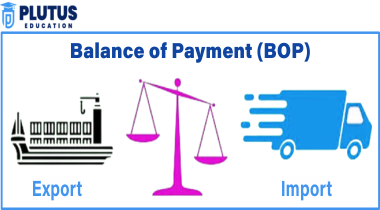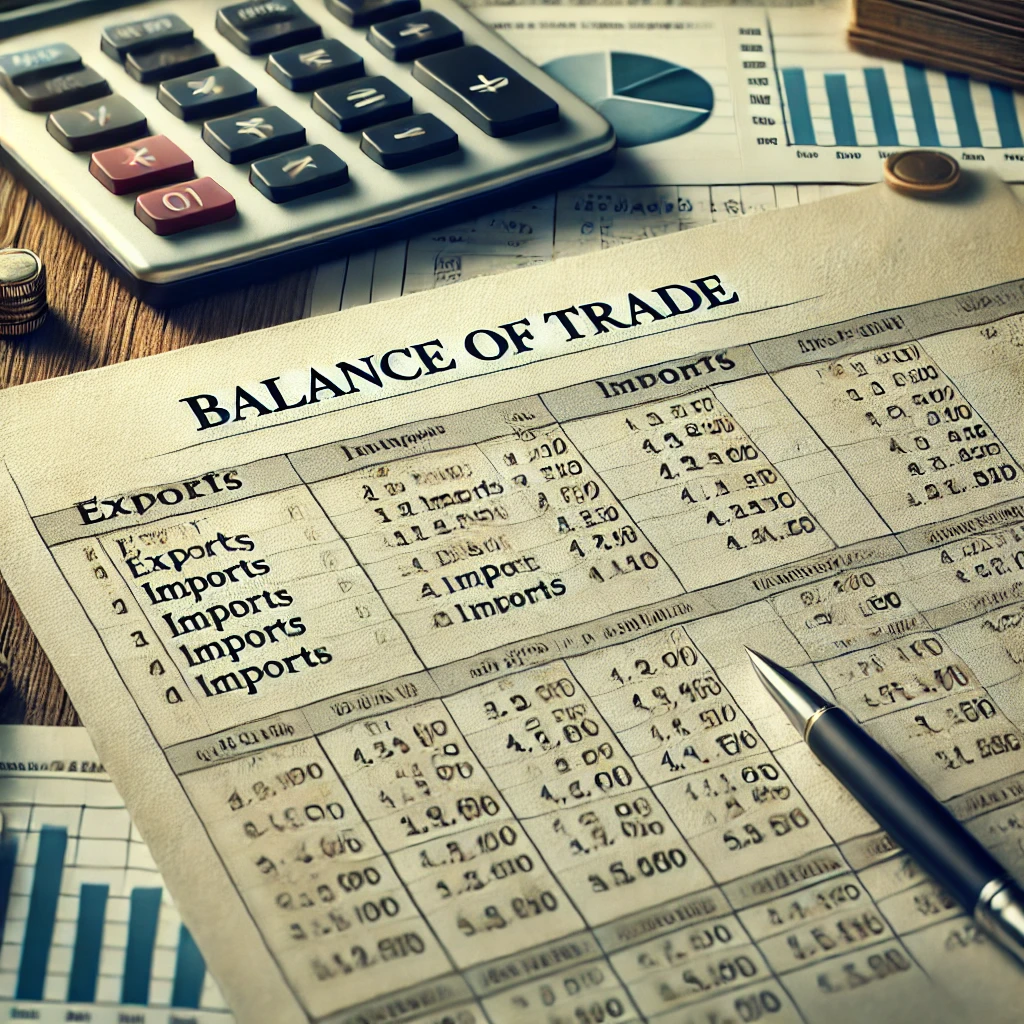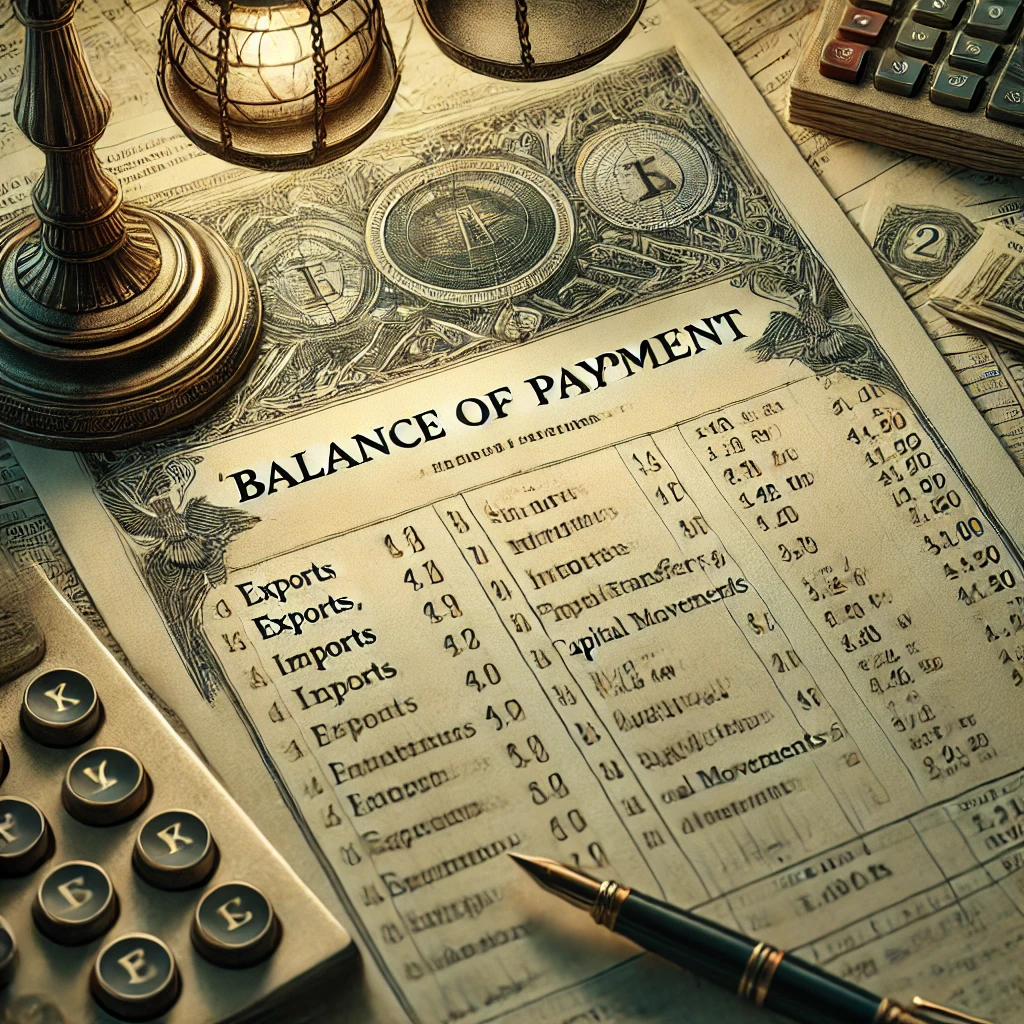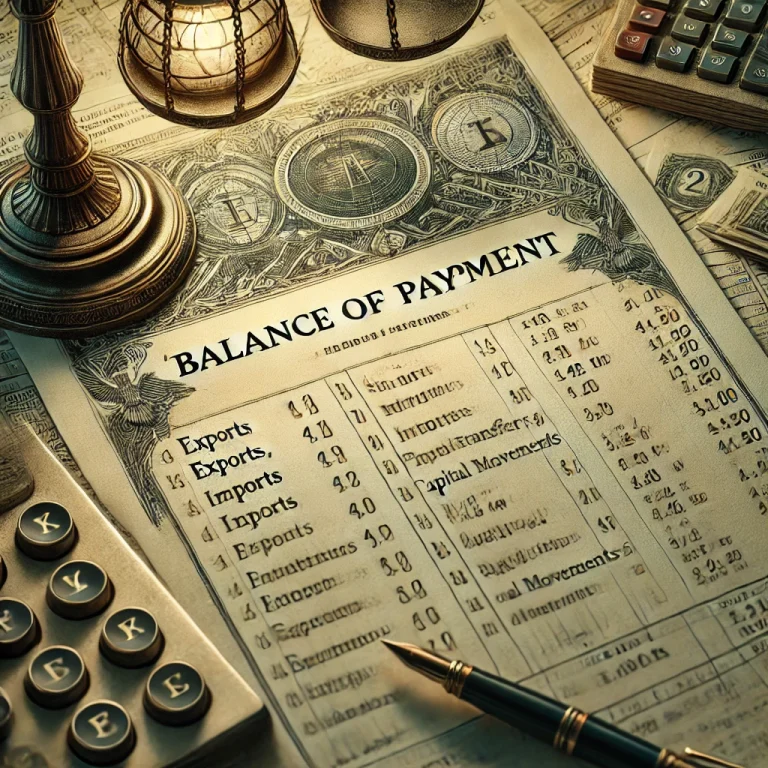BoP represents an integrated accounting account of all financial transactions conducted by a country in the balance towards the rest of the world in a year and other periods. Essentially, it covers all monetary exchange, which reflects the trading of both goods and services, as well as investments, as well as transfers. The system is such that all inflows of foreign currency, from either export or foreign direct investment, will balance out to outflows in the form of imports or foreign assistance. Although BoPs are typically imbalanced, theoretically they should always balance when all factors are taken into account.
A critical study of the BoP is highly important to economists and policymakers, businesses, and investors because it explains a country’s relationship with the world economy while also providing scope for policy formulation.
Balance of Payments Meaning
Balance of payments is an accounting framework that captures all the international economic transactions carried out between the residents of a given country and the rest of the world. It refers to the quantitative record of transferring goods, services, and capital across the borders of any country over a given period. The BoP comprises three main accounts: the current account, the capital account, and the financial account. Although, at times, the capital and financial accounts are combined into one account.
The BoP is constructed in such a way that the inflow of money into the country should balance out the outflow, or, at any given time, a country will have an accumulation in the current account only when an equivalent accumulation has occurred in the capital or financial accounts, and vice versa. For example, a trade surplus is offset by an equivalent deficit in the capital or financial accounts.

Types of Balance of Payments
The balance of payments is divided into three major accounts:
1. Current Account
The current account quantifies flows of goods, services, and unilateral transfers between a country and its trading partners. It shows the net national income earned abroad.
- Trade in Goods (Merchandise): This is the most apparent part of the current account and measures the net exports or imports of goods. A trade surplus is developed when exports are more than imports. In contrast, a deficit develops when imports are larger than exports.
- Trade in services: In addition to goods, countries trade in tourism, banking, and transport, given the importance that has accrued to service economies in the current accounts of most countries.
- Primary Income: Investment Income Profits, dividends, and interest payments on investments and wages earned by citizens working abroad, such as remittances from citizens working abroad and the dividend received due to foreign stock investment in a country.
- Secondary Income: Current Transfers These are unilateral transfers—remittances from citizens working abroad, foreign aid, and donations that do not have to be reciprocated.
2. Capital Account
The capital account describes all the international capital transfers. It is comprised of debt forgiveness, acquisitions and disposals of non-financial assets, and a flow of funds from one country to another in investments.
- Foreign Direct Investment: This is a long-term investment such as the buying of real estate, the establishment of manufacturing plants, or acquiring a stake in companies from abroad.
Portfolio Investment: These are investments in financial assets such as stocks and bonds, not directly acquiring a business. - Government Transfers and Debt Forgiveness: This includes capital transfers and foreign debts forgiven, which are two forms of non-market transactions.
3. Financial Account
The financial account shows changes in foreign ownership of assets, such as the net position of a nation’s foreign assets.
- Foreign Exchange Reserves: Stocks and liabilities in foreign currencies, gold, and the International Monetary Fund’s assets. Those reserves are necessary for stabilizing the value of a nation’s currency in foreign exchange markets.
- International Lending/Borrowing: It reports international loans and repayment of loans issued by private businesses and governments.
- Bank Deposits and Foreign Loans: The items included in this category are the inflows and outflows of money that relate to bank deposits, loans, and other financial instruments.
Components of Balance of Payments
| Component | Description |
|---|---|
| Goods | Trade in physical goods (e.g., cars, electronics). |
| Services | Transactions related to ownership of assets, foreign exchange reserves, and loans. |
| Primary Income | Income from investments, wages, and property abroad. |
| Secondary Income | Unilateral transfers, such as foreign aid and remittances. |
| FDI (Capital Account) | Investments in long-term assets abroad. |
| Portfolio Investments | Investments in securities (stocks and bonds). |
| Financial Account | Transactions related to ownership of assets, foreign exchange reserves, loans. |
Difference Between Balance of Trade and Balance of Payments
Balance of Trade and Balance of Payment are constantly debated together. The distance is a world apart though, which says, basically:

Balance of Trade: Only the difference in exports and imports of a country for goods and services is taken care of here. This is the time when the excess of exports over imports is referred to as the trade surplus, and, conversely, the excess of imports over exports is termed as the trade deficit.
Balance of Payments: BoP includes not only the trade in goods and services but also financial transactions, investments, and transfers. Therefore, while BoT focuses only on trade, BoP covers a broader range of economic activities.
| Aspect | Balance of Trade (BoT) | Balance of Payments (BoP) |
|---|---|---|
| Scope | Limited to goods and services trade. | Covers all financial transactions (goods, services, investments). |
| Components | Only imports and exports. | Current account, capital account, financial account. |
| Surplus/Deficit | Can show surplus or deficit. | Always balances (inflows = outflows). |
Importance of Balance of Payments
The balance of payments provides several critical insights into a country’s economic standing and its interactions with the global market. Here are some key reasons why BoP matters:
Economic Health Indicator
A current account is very important as it reflects a ‘window’ on the health of an economy in a country. Continuously running deficits in a country’s current account might indicate a distressed system of economics, while an imbalance in the form of a surplus could be regarded as an indicator of a healthy economy. For example, China and Germany have managed to run surpluses attributed to their overall exporting sector, while the United States has always run at a trade deficit due to the high importing sectors of the economy.
Foreign Exchange and Currency Valuation
BoP affects the currency value of the country. That implies that a deficit in the current account may cause devaluation through high demand for foreign exchange compared to supply. Conversely, a surplus might lead to the appreciation of the currency due to increased foreign exchange reserves.
Investment Attraction
Countries with a balanced BoP attract foreign investments. An economy that presents a positive BoP means stability, which attracts investors from other countries. Comparatively, a bad BoP does not encourage investment since it gives an impression of economic trouble.
Policy Formulation
The data is used by the governments involved in fiscal and monetary policies within this context. For example, if a country has a persistent current account deficit, it can employ measures to reduce imports, devalue its currency, or increase exports.

Disequilibrium in Balance of Payments
Disequilibrium occurs when the balance of payment accounts does not balance naturally. The imbalances tend either to be sustained surpluses or deficits, whereby an economy may get destabilized and, consequently, have serious consequences, from currency devaluation to inflation.
Causes of Disequilibrium
- High Levels of Imports: When imports are substantially higher than exports, then it becomes a trade deficit. Countries that import large products without corresponding exports usually get current account deficits.
- Extensive Foreign Debt: If a country has borrowed large sums of foreign debt that it cannot service, then its balance of payments is said to experience disequilibrium.
- Domestic Inflation and Import-Competitiveness: The more extensive the level of inflation in the domestic economy, the lesser the competitiveness of its products to foreign buyers, thereby resulting in less export and BoP deficit.
- Political Instability: Political instability creates an unattractive environment for foreign investments and encourages reduced inflows into the capital account.
Corrective Measures
Countries can adopt several measures to correct disequilibrium:
- Currency Devaluation: A drop in the value of a country’s currency decreases the price of exports of the country while increasing the price of imports, thereby redressing the trade imbalance.
- Tariffs and Quotas: Importation of tariffs or quotas lowers imports as more indigenous productions are raised, which helps redress BoP deficits.
- Export Promotion: Governments may lower taxes or offer subsidies to an exporter to encourage higher exportations.
Conclusion
The balance of payments is an indicator of the global economic status of a country. It shows the global economic transactions a country has been conducting with other parts of the world and influences its exchange rates, investment inflows, and the overall health of the economy. Monitoring and managing the BoP will make it possible for governments to enforce policies that ensure constant economic stability and growth.
The balance of payments creates an avenue whereby a country can evaluate its pattern of trade, manage foreign debt, and set future policy directions that will lead toward a sustainable development process.
Balance of Payment FAQs
What is the balance of payments used for?
The balance of payments is used to track a country’s financial transactions with the rest of the world. It helps policymakers and economists understand trade flows, investment levels, and the economic health of a nation.
What is the difference between the current account and the capital account?
The current account tracks trade in goods and services, along with income and transfers. The capital account, on the other hand, monitors international ownership of assets, including foreign investments, loans, and bank deposits.
Can the balance of payments show a deficit?
While specific accounts (like the current account) can show a deficit or surplus, the overall balance of payments always balances. A current account deficit, for instance, is offset by inflows in the capital or financial accounts.
Why does disequilibrium in the balance of payments occur?
Disequilibrium occurs due to factors such as excessive imports, foreign debt, inflation, and political instability. When inflows and outflows do not naturally balance, this creates an imbalance in the economy.
How can countries correct a balance of payments deficit?
Countries can correct a BoP deficit by devaluing their currency, introducing tariffs or quotas, promoting exports, or adjusting monetary and fiscal policies.


